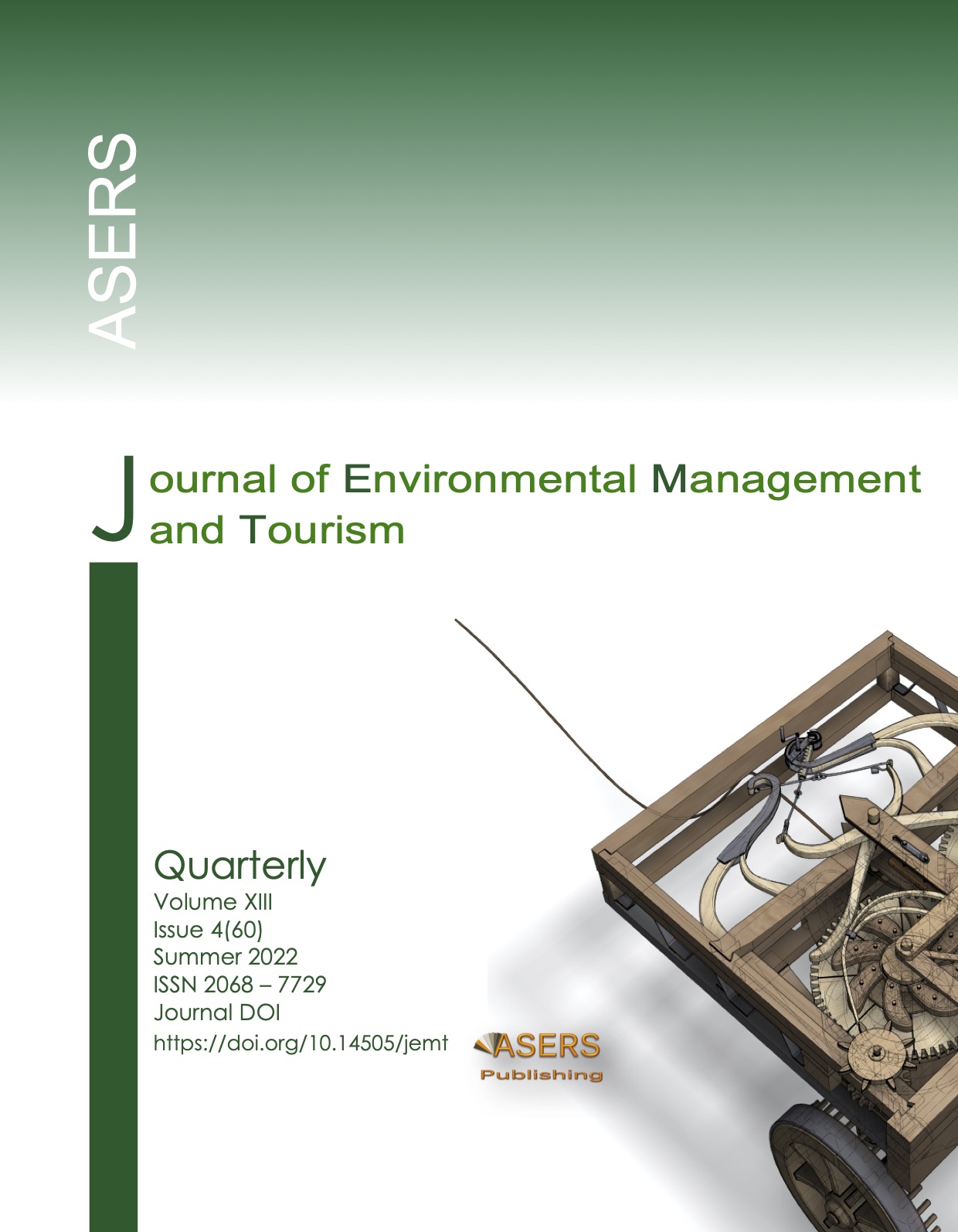Silk Roads Routes. Sustainable Tourism after COVID-19
Abstract
Since ancient times, people have traveled and exchanged goods, technology and ideas with neighboring settlements. The vast Eurasian continent has traditionally been a crossroads of trade routes, which helped create the increasingly famous Silk Road. Sea routes were created connecting East and West by water, which were mainly used for the trade in spices, which gave rise to the "spice route". Numerous road networks helped not only in the transportation of goods and luxury goods, but also in the transfer of knowledge, ideas, culture and beliefs, and had a great influence on the history and development of the Eurasian civilization, as well as the development of tourism and its various directions.
This research paper intends to provide an analysis covering countries near and far abroad in the field of tourism and travel, tourism policy with indicators of sustainability and comparison of indicators of sustainable consumption and production patterns. Summarizing the results obtained, we concluded about the potential areas for improvement in the tourism industry and proposed a new set of recommendations for their evaluation.
References
[2] Dulatbekov, N. O. 2021. Analysis of Kazakhstan-Japanese relations in the post-war and their influence on the tourism industry and economic development. Journal of Environmental Management and Tourism, 6(54): 1664 - 1675. DOI: 10.14505/jemt.v12.6(54).22
[3] Haller A.-P., Butnaru G., Hârșan G.-D., and Ştefănică M. 2020. The relationship between tourism and economic growth in the EU-28. Is there a tendency towards convergence? Economic Research-Ekonomska Istraživanja, 34 (1): 1121-1145. DOI: https://doi.org/10.1080/1331677X.2020.1819852
[4] Hateftabar, F. 2020. The Study of Development in the Tourism Industry: Iran as a destination with special attributes. Business administration. Université Panthéon-Sorbonne – Paris: IffNNT, 201p. Available at: https://tel.archives-ouvertes.fr/tel-03276195/document
[5] Jayaraman, T.K. and Makun, K. 2022. Asymmetric analysis of tourism and economic growth in South Asian countries: lessons for policymakers towards mitigating the adverse effects of Covid-19. Journal of Applied Economic Sciences, 2(72): 49 – 55.
[6] Kim, A., Kim, K.P., and Nguyen, T.H.D. 2021.The green accommodation management practices: The role of environmentally responsible tourist markets in understanding tourists’ pro-environmental behavior. Sustainability, 13: 2326 - 2335. DOI: https://doi.org/10.3390/su13042326
[7] Motsa A., Rybakova S., Shelemetieva T., Zhuvahina I., and Honchar L. 2021. The effect of regional tourism on economic development, International Review, 1(2): 67-75.
[8] Nyoni, T. 2021. Modeling and forecasting international tourism in Zimbabwe: A bright future for Zimbabwe’s tourism industry. Journal of Applied Economic Sciences, 4(74): 421 – 434.
[9] Omarova A., Nurumov A., Karipova A., Aimurzina B., and Kamenova M. 2021. Analysis of the development of innovative activities of the tourism industry in the influence of pandemic. Journal of Environmental Management and Tourism, 12(6): 1442–1453. DOI: 10.14505/jemt.v12.6(54).02
[10] Pronello, C., and Gaborieau, J-B. 2018. Engaging in pro-environment travel behavior research from a psycho-social perspective: A review of behavioral variables and theories. Sustainability, 10: 2412 - 2420. DOI: https://doi.org/10.3390/su10072412
[11] Simchenko, N. et al. 2021. Theoretical Concepts of Digital Regulation of Extreme Vibrations in Consumer Demand on the Market of Services. Journal of Environmental Management and Tourism, 12(4): 1000-1015. DOI: https://doi.org/10.14505//jemt.v12.4(52).14
[12] Sładkowski, A. (Ed). 2018. Transport systems and delivery of cargo on East–West routes in Studies in Systems, Decision and Control Book., Springer; 1st Ed. ISBN-13: 978-3319782942, 676p.
[13] Official resource of Agency for Strategic planning and reforms of the Republic of Kazakhstan, Bureau of National statistics. Available at: https://stat.gov.kz
[14] Official resource of Agency on statistics under President of the Republic of Tajikistan. Available at: https://www.stat.tj
[15] Official resource of the Committee on Statistics of the Ministry of National Economy of the Republic of Kazakhstan. Available at: http://www.stat.kg/ru/statistics/turizm/
[16] Official resource of UNESCO. Available at: https://whc.unesco.org/en/list
[17] Official resource of United Nations Sustainable Development Group. Available at: https://unsdg.un.org/sites/default/ files/2020-08/sg_policy_brief_covid-19_tourism_august_2020.pdf
[18] Official resource of United Nations World Tourism Organisation. Available at: https://www.unwto.org/news/global-tourism-sees-upturn-in-q3-but-recovery-remains-fragile
[19] Official resource of United Nations World Tourism Organization. Available at: https://www.e-unwto.org/doi/epdf/10.18111/ 9789284416660
[20] Official resource of World Economic Forum. Available at: https://www3.weforum.org/docs/WEF_TTCR_2017web0401.pdf
[21] Official resource of World Economic Forum. Available at: https://reports.weforum.org/travel-and-tourism-competitiveness-report-2017/about-the-ttcr/
[22] Official resource of World Economic Forum. Available at: https://www3.weforum.org/docs/WEFTTCompetitivenessReport_ 2013.pdf
[23] Official resource of World Economic Forum. Available at: https://www.weforum.org/reports/travel-and-tourism-competiti veness-report-2015
[24] Official resource of World Economic Forum. Available at: https://www3.weforum.org/docs/WEF_TTCR_2019.pdf
[25] UNEP Document Repository. Available at: https://wedocs.unep.org/handle/20.500.11822/1
[26] United Nations Environment Programme. 2021. Available at: https://wrap.org.uk/sites/default/files/2021-09/WRAP-Financial-implications-for-farm-enterprises-of-reducing-food-surplus-and-waste.pdf
Copyright© 2025 The Author(s). Published by ASERS Publishing 2025. This is an open access article distributed under the terms of CC-BY 4.0 license.
